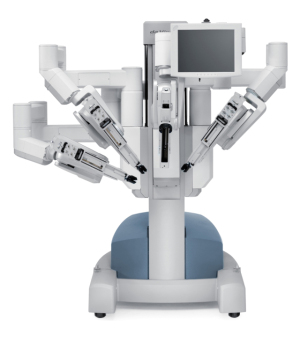by
Carol Ko, Staff Writer | April 25, 2013

Robotic surgery is facing
new FDA scrutiny.
When introduced over ten years ago, surgical robots were hailed as a major breakthrough. To demonstrate their feats of precision the surgeon-guided robots have been shown folding paper planes, lacing footballs--even deftly peeling the skin off a grape.
Now, thanks to enthusiastic adoption from surgeons, these high-tech helpers are enjoying a boom across Western Europe and the United States. A new report by consulting firm Frost and Sullivan shows that the robot-assisted surgical market in Western Europe will reach $1.6 billion by 2018.
The reason behind the growth is straightforward: many surgeons believe the devices lead to better patient outcomes.



Ad Statistics
Times Displayed: 2078
Times Visited: 9 Fast-moving cardiac structures have a big impact on imaging. Fujifilm’s SCENARIA View premium performance CT brings solutions to address motion in Coronary CTA while delivering unique dose saving and workflow increasing benefits.
"Clinical studies proving the efficiency and cost-effectiveness of these robots are driving the market," Sowmya Rajagopalan, program manager at Frost and Sullivan, told DOTmed News.
But this boom in robotic surgery may soon be curbed — at least in the U.S. — due to safety concerns. The U.S. Food and Drug Administration is currently looking into a spike in reported complications and problems around the Da Vinci surgical robot. The device is currently the only robot on the market approved for soft tissue surgery.
Reports from last year indicate that there may have been at least five deaths in which surgical robots played a role.
However, this spike may be a result of more widespread adoption of the technique. The volume of robot-assisted surgeries increased from 114,000 in 2008 to 367,000 last year.
Furthermore, it's difficult to quantify an increase since device manufacturers and hospitals, not doctors, are responsible for reporting complications.
And in many cases it's often tricky to pinpoint the exact cause behind a complication or death. "It could be an error that had nothing to do with the robot. To prove it was directly caused by the robot is often very difficult," said Rajagopalan.
Doctors also point out that patients undergoing robot-assisted surgery are subject to the same risk of human error that they would face with any other tool at the surgeon's disposal.
"I've [seen] a couple [of lawsuits] where the robot wasn't hooked up and they blame the robot. It had nothing to do with the robot," Dr. Randolph Chitwood, director of the East Carolina Heart Institute, told DOTmed News. "The reason being the robot doesn't do things to people, it's the surgeon."
The procedure is a costly investment for hospitals, and critics allege that there still aren't enough robust studies proving the technique's superiority over traditional surgery to warrant the hype.
Nevertheless, the device's popularity in the United States is helping fuel more widespread European adoption.
"In upcoming years we could foresee loads of new entrants in the market and hopefully there will be more applications as well," says Rajagopalan.


Vince Jorgensen
Robotic Accidents Reported
April 26, 2013 10:27
The reported incident numbers do not make sense. In 2012 there were 367,000 robotic procedures, but 425,000 reported accidents? Do you mean 45,000?
I think the more telling statistic would be the ratio of accidents to procedures increasing or decreasing.
to rate and post a comment